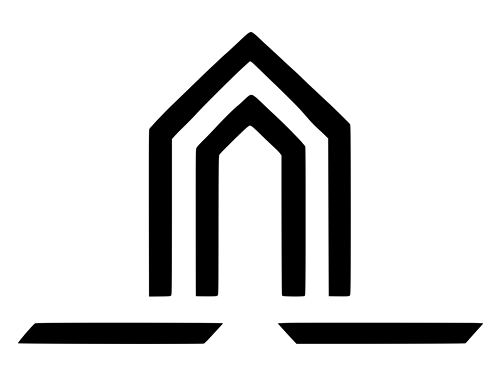Table of Contents
Signs of Foundation Damage
Foundation damage can be a serious issue for homeowners, and it’s important to be able to recognize the signs of trouble before they become too severe. Some of the most common signs of foundation damage include cracks in walls or floors, uneven floors, and doors or windows that stick.
When it comes to cinder block foundations specifically, these signs can be particularly concerning. Cinder block foundations are known for being strong and durable, but they can still be susceptible to damage over time. Here’s what you need to know about the signs of foundation damage in a cinder block foundation:
Cracks in Walls or Floors
One of the most obvious signs of foundation damage is cracks in walls or floors. These cracks can be caused by a variety of factors, including settling or shifting of the foundation. In a cinder block foundation, cracks may be more likely to occur due to the weight of the blocks themselves.
Uneven Floors
Another common sign of foundation damage is uneven floors. This can be caused by a variety of factors, including settling or shifting of the foundation. In a cinder block foundation, uneven floors may be more likely to occur due to the weight of the blocks themselves.
Doors or Windows That Stick
Finally, doors or windows that stick can also be a sign of foundation damage. This is because the shifting or settling of the foundation can cause the frames of the doors or windows to become misaligned. In a cinder block foundation, this can be particularly concerning because the weight of the blocks can exacerbate the problem.
In conclusion, if you notice any of these signs of foundation damage in your cinder block foundation, it’s important to take action as soon as possible. Contact a professional foundation repair company to assess the damage and recommend the best course of action to protect your home.
Causes of Cinder Block Foundation Damage
Cinder block foundations are a popular choice for many homeowners due to their durability and affordability. However, like any other foundation type, cinder block foundations are susceptible to damage. In this article, we will discuss the common causes of cinder block foundation damage and what homeowners can do to prevent them.

Soil Movement
One of the most common causes of cinder block foundation damage is soil movement. This can occur due to a variety of reasons, such as changes in moisture levels, soil compaction, and soil erosion. When the soil beneath a foundation shifts or settles, it can cause the foundation to crack or shift, leading to structural damage.
To prevent soil movement from damaging your cinder block foundation, it is important to ensure that the soil around your home is properly graded and drained. This can be achieved by installing a proper drainage system and ensuring that the soil is compacted and stable before construction.
Water Damage
Water damage is another common cause of cinder block foundation damage. When water seeps into the foundation, it can cause the cinder blocks to deteriorate and weaken, leading to cracks and structural damage. Water damage can occur due to poor drainage, plumbing leaks, or heavy rainfall.
To prevent water damage from affecting your cinder block foundation, it is important to ensure that your home has proper drainage and that any plumbing leaks are promptly repaired. Additionally, homeowners can install a waterproofing system to prevent water from seeping into the foundation.
Poor Construction
Finally, poor construction is another common cause of cinder block foundation damage. This can occur due to a variety of reasons, such as using low-quality materials, improper installation, or inadequate reinforcement.
To prevent poor construction from affecting your cinder block foundation, it is important to hire a reputable contractor who has experience in building cinder block foundations. Additionally, homeowners should ensure that the materials used in the construction are of high quality and that the foundation is properly reinforced.
In conclusion, cinder block foundation damage can occur due to a variety of reasons, such as soil movement, water damage, and poor construction. By taking the necessary steps to prevent these factors from affecting your foundation, homeowners can ensure that their cinder block foundation remains strong and durable for years to come.
Repair Options
Cinder block foundations are a popular choice for many homes, but they are not immune to damage. Over time, cracks can form in the blocks, which can lead to structural issues if left unaddressed. Fortunately, there are several options for repairing cinder block foundation damage. In this article, we will discuss the pros and cons of each option and when they might be appropriate.
Patching Cracks
One option for repairing cinder block foundation damage is to patch the cracks. This involves filling the cracks with a special epoxy or cement mixture. Patching cracks is a relatively inexpensive option and can be done quickly. However, it is not a permanent solution and may need to be repeated over time. Additionally, patching cracks may not be appropriate for larger cracks or more severe damage.
Installing Steel Reinforcements
Another option for repairing cinder block foundation damage is to install steel reinforcements. This involves adding steel beams or plates to the foundation to provide additional support. Steel reinforcements are a more permanent solution than patching cracks and can help prevent further damage. However, they can be expensive and may require significant excavation work to install.
Rebuilding the Foundation
In some cases, the damage to a cinder block foundation may be so severe that rebuilding the foundation is the only option. This involves removing the damaged foundation and building a new one in its place. Rebuilding the foundation is the most expensive option but is also the most permanent solution. It can also provide an opportunity to address any underlying issues that may have contributed to the damage.
In conclusion, there are several options for repairing cinder block foundation damage. Patching cracks is a quick and inexpensive option, but may not be appropriate for more severe damage. Installing steel reinforcements is a more permanent solution but can be expensive. Rebuilding the foundation is the most expensive option but is also the most permanent solution and can address underlying issues. It is important to consult with a professional to determine the best option for your specific situation.
Hiring a Professional for Cinder Block Foundation Repair
Cinder block foundations are a popular choice for many homeowners due to their durability and affordability. However, over time, these foundations can develop cracks and other issues that require professional repair. While some homeowners may be tempted to tackle these repairs themselves, it is important to hire a professional for cinder block foundation repair.
The importance of hiring a professional for cinder block foundation repair cannot be overstated. These repairs require specialized knowledge and equipment that most homeowners do not possess. Attempting to repair a cinder block foundation without the proper expertise can lead to further damage and costly repairs down the line. A professional foundation repair contractor will have the experience and tools necessary to properly diagnose and repair any issues with your foundation, ensuring that your home remains safe and stable for years to come.
When looking for a foundation repair contractor, homeowners should keep a few key factors in mind. First and foremost, it is important to find a contractor with experience in cinder block foundation repair specifically. This type of repair requires a different approach than other types of foundation repair, so it is important to find a contractor who is familiar with the unique challenges of working with cinder block foundations.
Homeowners should also look for a contractor who is licensed and insured. This will ensure that the contractor is qualified to perform the necessary repairs and that you are protected in the event of any accidents or damage during the repair process. Additionally, it is important to find a contractor who offers a warranty on their work. This will give you peace of mind knowing that if any issues arise after the repair, the contractor will be responsible for fixing them.
To find a reputable foundation repair contractor, homeowners can start by asking for recommendations from friends and family. They can also search online for contractors in their area and read reviews from past customers. It is important to get multiple quotes from different contractors to ensure that you are getting a fair price for the repair.
In conclusion, hiring a professional for cinder block foundation repair is essential for ensuring the safety and stability of your home. Homeowners should look for a contractor with experience in cinder block foundation repair, who is licensed and insured, and who offers a warranty on their work. By taking the time to find a reputable contractor, homeowners can rest assured that their foundation repair will be done right the first time.
Conclusion
In conclusion, understanding cinder block foundation repair is crucial for homeowners. The key points of this article include the causes of cinder block foundation damage, the signs of foundation problems, and the repair options available.
It is important for homeowners to be aware of the signs of foundation damage, such as cracks in the walls or floors, uneven floors, and doors or windows that stick. Ignoring these signs can lead to more serious and costly damage in the future.
Repair options for cinder block foundation damage include epoxy injection, carbon fiber reinforcement, and helical piers. It is important to consult with a professional foundation repair contractor to determine the best solution for your specific situation.
By understanding cinder block foundation repair, homeowners can take proactive steps to prevent further damage and ensure the safety and stability of their homes. Don’t wait until it’s too late, take action now to protect your home and your investment.

